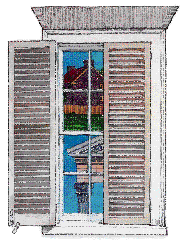
Most architects I know prize their collections of books. Some books are assemblages of buildings designed by revered predecessors or favorite contemporaries; others are long-forgotten texts that were read as students-countless miscellaneous pages which inspired, recalled, refreshed, clarified, explained, described. Some books have special significance, perhaps acquired at a moment of particular openness or fingered in a memorable locale. These occupy a conspicuous shelf, or grace a prominent surface-an object of obscure desire, understood only by the owner of the book, and maybe his family.
Witnessing the explosion of electronic communications, I wonder what place books will have in our lives tomorrow.
With this question in mind, I opened a new addition to my collection, an old-timer in a fresh suit. Instantly transported, I moved from page to page as if in a dream. Crisp cloudless photographic views of vaguely familiar-looking places. Precisely measured fine black line drawings tracing windows, shutters, porticos, columns-an encyclopedia of architectural tradition. The steady, clear-eyed gaze of an intent reporter. Enviable clarity.
Published during the depths of the Depression in 1936, and recently republished by the University of Pittsburgh Press with an excellent introduction by historian Dell Upton, The Early Architecture of Western Pennsylvania, by Charles Morse Stotz, greeted me with a well-scrubbed, confident smile. Shining through these pages are 415 new prints from the original large- format negatives and one print from an early small-format 35-millimeter negative. Their fine grain and incidental detail seem to exist out of time, as classic compositions in wood, stone, brick, landscape. Stotz's photographer was the gifted local Luke Swank, who would later distinguish himself at Life magazine. Clothing and hairstyles are not permitted to mark the years in which these views were recorded; this omission contributes to the dreamlike quality which they possess, as well as to their timelessness.
And then there are the measured drawings carefully crafted by legendary local architectural figures like Robert Schmertz, the Celli brothers and Stewart L. Brown. Using a clear and concise graphic code which layman and architect alike can decipher, the drawings invite interaction. My eyes intently traced thick stone walls, elaborately carved baluster rails, plaster pilasters.
"There are valued times in almost everyone's experience," architect Michael Benedikt has written in his book, For an Architecture of Reality, "when the world is perceived afresh: perhaps after a rain as the sun glistens on the streets and windows catch a departing cloud, or alone, when one sees again the roundness of an apple. At these times, our perceptions are not at all sentimental. They are, rather, matter of fact, neutral and undesiring-yet suffused with unreasoned joy at the simple correspondence of appearance and reality, at the evident rightness of things as they are. It is as though the sound and feel of a new car door closing with a kerchunk! were magnified and extended to dwell in the look, sound, smell and feel of all things."
Reading and studying The Early Architecture of Western Pennsylvania has had precisely this effect on me. It is a simple tonic for our complex times.
Paul Rosenblatt is associate professor of Architecture at Carnegie Mellon University.